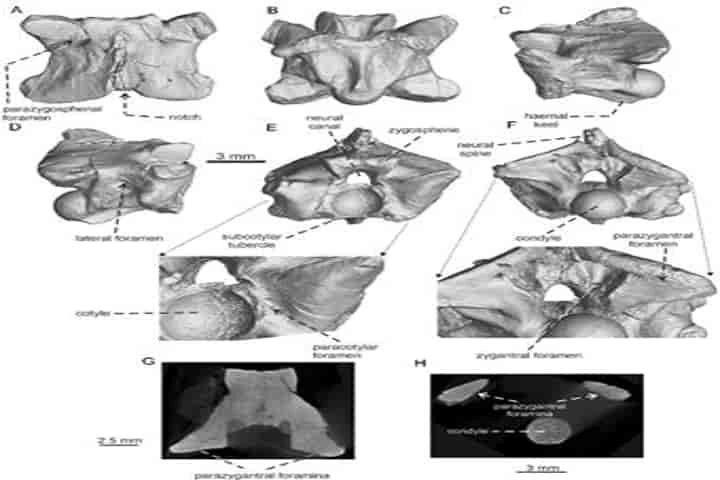

Indian scientists have discovered an almost 35 million years old rare fossil of the gigantic Madtsoiidae snake from Ladakh Himalaya for the first time (Pic. Courtesy PIB)
<p>
Indian scientists have discovered an almost 35 million years old rare fossil of the gigantic Madtsoiidae snake from Ladakh Himalaya for the first time, according to a statement issued by the Ministry of Science and Technology today.</p>
<p>
The fossil of a Madtsoiidae snake spotted in the molasse deposits of Ladakh Himalaya indicates their prevalence in the subcontinent for a much longer time than previously thought, the official statement said.</p>
<p>
The discovery shows that global climatic shifts and the prominent biotic reorganization across the Eocene-Oligocene boundary (which correlates to the European Grande Coupure), did not cause the extinction of this important group of snakes in India.</p>
<p>
Madtsoiidae is an extinct group of medium-sized to gigantic snakes which first appeared during the late Cretaceous period&nbsp; and were mostly distributed in the Gondwanan landmasses. From the fossil record, the whole group disappeared in the mid-Paleogene period across most Gondwanan continents except for Australia where it survived with its last known taxon Wonambi till late Pleistocene.</p>
<p>
The occurrence of Madtsoiidae from the Oligocene of Ladakh indicates their continuity at least to the end of the Paleogene (geologic period and system that spans 43 million years from the end of the Cretaceous Period 66 million years ago). The research published in Journal of Vertebrate Paleontology shows that the members of this group were successful in this subcontinent for much longer time than previously thought.</p>
<p>
The scientists who have made the discovery include Dr. Ningthoujam Premjit Singh, Dr. Ramesh Kumar Sehgal, and Mr. Abhishek Pratap Singh from Wadia Institute of Himalayan Geology, Dehradun, in association with Dr. Rajeev Patnaik and Mr. Wasim Abass Wazir from Panjab University Chandigarh; Dr. Navin Kumar and Mr. Piyush Uniyal from Indian Institute of Technology Ropar, and Dr. Andrej &#268;er&#328;ansk&yacute; of Comenius University Slovakia.</p>
<p>
The newly described specimen is housed in the repository of Wadia Institute, an autonomous institute of Department of Science and Technology.</p>
As India continues to get World support against the Pahalgam Terror attack that killed 26…
Union Minister of Industry and Supply Piyush Goyal on Saturday highlighted the success of a…
In a display of outrage following the Pahalgam terror attack, thousands from the Indian community…
In a continued crackdown following the Pahalgam terror attack, security forces and Jammu and Kashmir…
In a massive statewide crackdown, over 550 illegal immigrants from Bangladesh were detained in Ahmedabad…
The Deputy Chief of the Main Operations Directorate of the General Staff of the Russian…